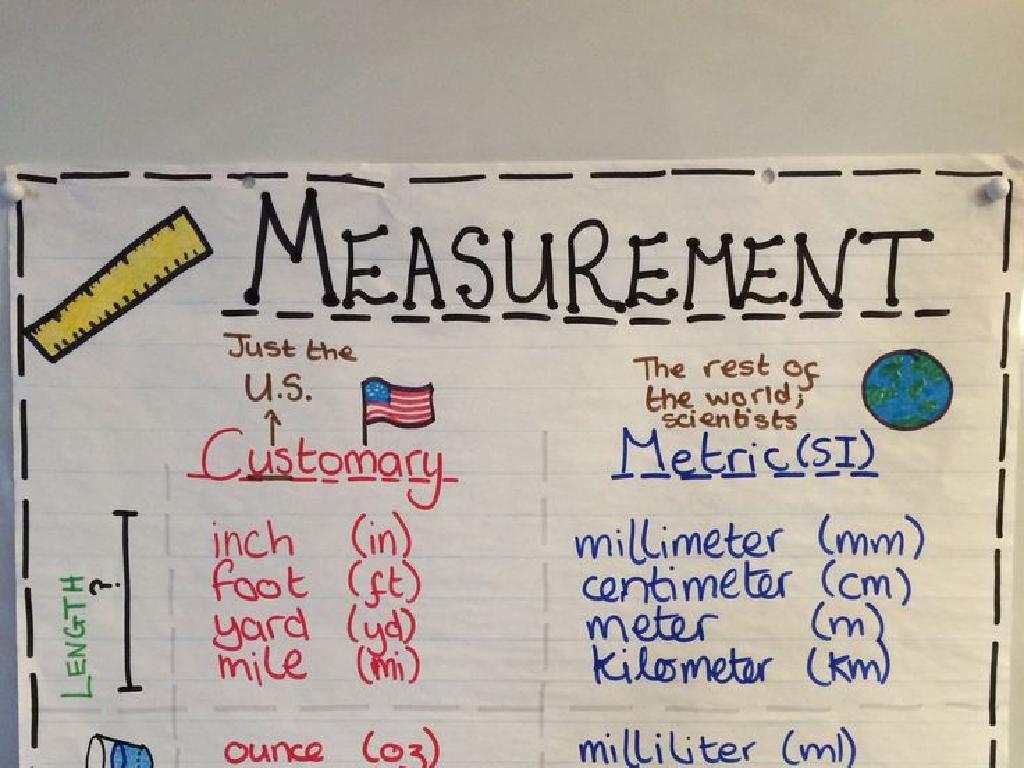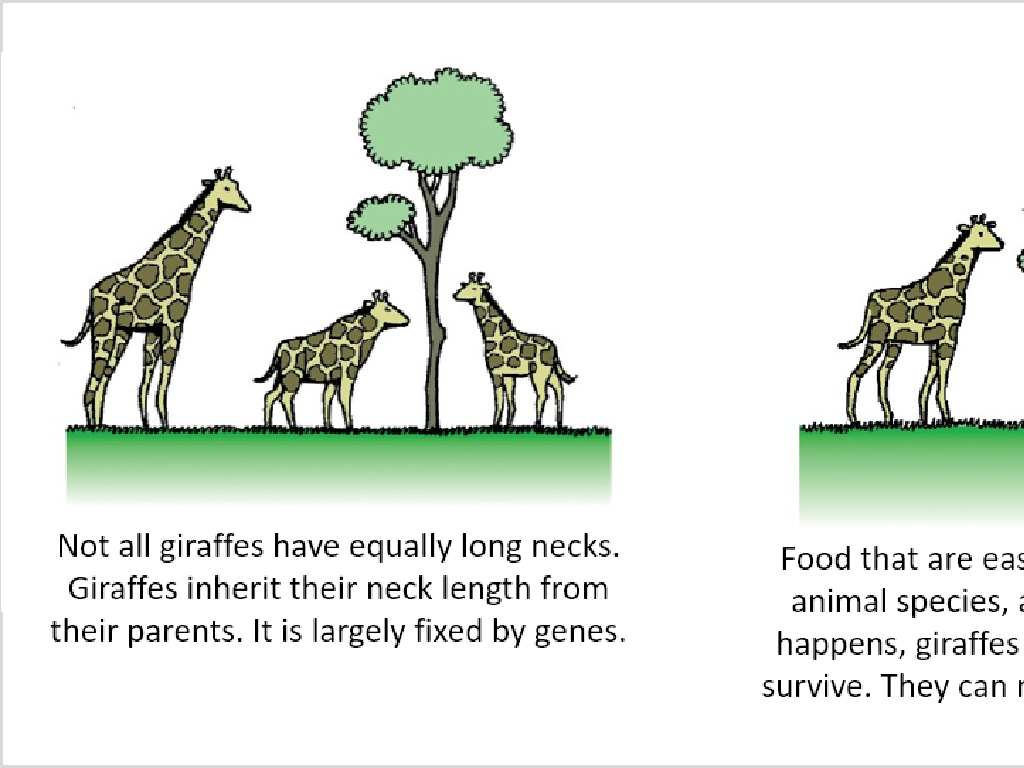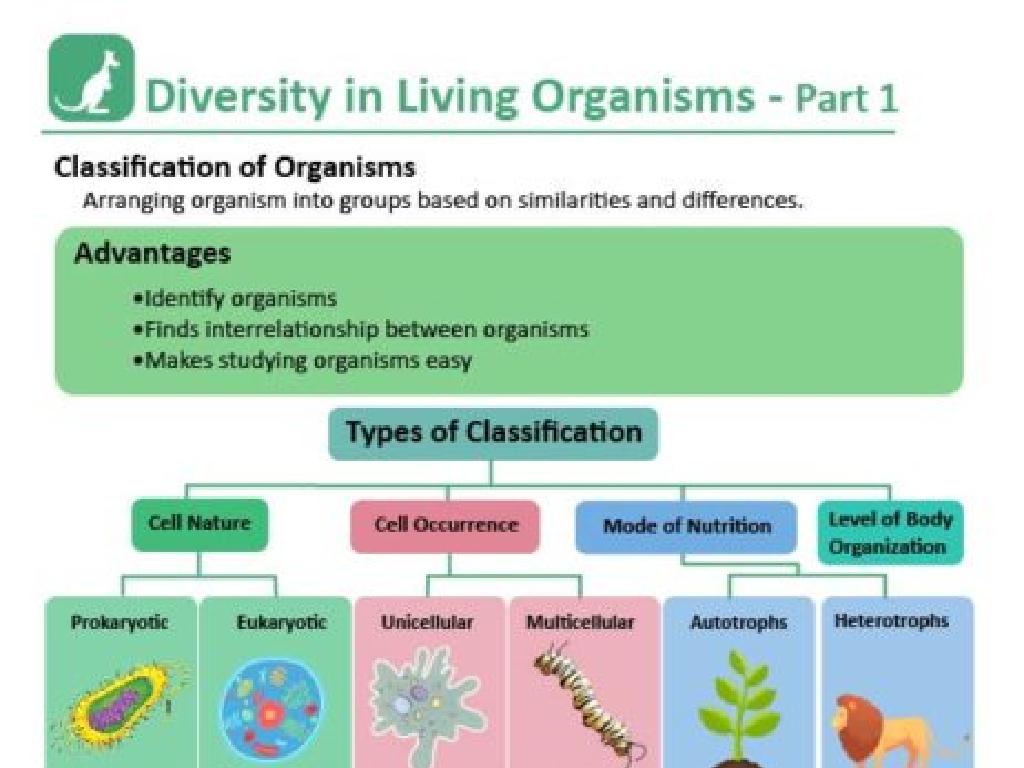Compound Events: Find The Number Of Sums
Subject: Math
Grade: Seventh grade
Topic: Probability
Please LOG IN to download the presentation. Access is available to registered users only.
View More Content
Exploring Compound Events in Probability
– Understanding basic probability
– Probability measures the likelihood of an event occurring
– Defining compound events
– Compound events involve the combination of two or more separate events
– Finding the number of sums
– Use addition and multiplication principles to find possible sums
– Significance of compound events
|
This slide introduces the concept of probability and its application to compound events, which are scenarios involving two or more events. Begin by explaining the fundamental principles of probability and its role in predicting outcomes. Then, define compound events and differentiate them from simple events. Focus on teaching students how to calculate the number of possible sums when combining events, using addition for mutually exclusive events and multiplication for independent events. Emphasize the importance of understanding compound events in real-life situations, such as determining the odds in games of chance. Provide examples and encourage students to think of their own scenarios where compound events might occur.
Understanding Probability
– Define probability
– Probability is the chance of an event occurring.
– Probability measures likelihood
– Likelihood ranges from 0 (impossible) to 1 (certain).
– Everyday examples of probability
– Flipping a coin, rolling dice, predicting weather.
– Applying probability to events
– How likely is it to roll a sum of 7 with two dice?
|
This slide introduces the concept of probability, which is a fundamental part of understanding compound events. Start by defining probability as the measure of how likely an event is to occur. Explain that probability is quantified as a number between 0 and 1, where 0 means the event cannot happen and 1 means it is certain to happen. Use relatable examples such as flipping a coin (50% chance of heads or tails), rolling dice, or predicting the chance of rain to illustrate the concept. Encourage students to think of other everyday examples. Conclude by relating probability to compound events, such as finding the likelihood of rolling a specific sum with two dice, setting the stage for deeper exploration into compound probabilities.
Simple vs. Compound Events in Probability
– Define simple events
– A single outcome from a probability experiment, e.g., flipping a coin.
– Introduce compound events
– Two or more simple events combined, e.g., rolling two dice.
– Contrast simple and compound events
– Simple events have one outcome; compound events have multiple outcomes.
– Examples of each event type
– Simple: coin toss (heads or tails); Compound: rolling a 3 and 5 on dice.
|
This slide introduces the foundational concepts of simple and compound events in probability. Begin by defining a simple event as an event with a single outcome, such as flipping a coin. Then, explain that a compound event involves the combination of two or more simple events, like rolling two dice. Highlight the differences by emphasizing that simple events have one possible outcome, while compound events involve multiple outcomes and require more complex calculations. Use relatable examples to illustrate these concepts, such as the likelihood of getting heads on a coin toss versus the probability of rolling a specific sum on two dice. Encourage students to think of other examples of simple and compound events to solidify their understanding.
Exploring Compound Events in Probability
– Defining a ‘Compound’ event
– An event with two or more independent outcomes
– Real-world examples
– Flipping a coin and rolling a die
– Calculating outcomes
– Use multiplication to find total outcomes
– Practice problems
|
A compound event in probability involves the combination of two or more separate events. To understand this concept, students should first be familiar with simple events. Provide examples such as flipping a coin and rolling a die simultaneously, where each event is independent of the other. Teach students the fundamental principle of calculating the number of outcomes for compound events by multiplying the number of outcomes for each individual event. For instance, if a coin has 2 possible outcomes and a die has 6, the total outcomes for both would be 2 * 6 = 12. Encourage students to solve practice problems to apply this concept and solidify their understanding.
Compound Events: Finding the Number of Sums
– Use addition for possible outcomes
– Example: Sum with two dice
– If rolling two dice, consider all the face combinations
– Step-by-step problem-solving
– Identify all possible sums, then count the frequency of each sum
– Practice with different sums
– Try various pairs of numbers to understand the pattern
|
This slide introduces students to the concept of compound events in probability, specifically focusing on finding the number of possible sums. Start by explaining how addition can be used to determine the total number of outcomes in a compound event. Use the example of rolling two dice to illustrate how each combination of faces leads to a sum. Guide students through a step-by-step approach to identify all possible sums and their frequencies. Encourage students to practice with different pairs of numbers to solidify their understanding of the concept. The goal is for students to become comfortable with calculating the number of possible outcomes for various compound events.
Compound Events: Practice Problems
– Problem 1: Two six-sided dice sums
– Calculate all possible sums from rolling two dice
– Problem 2: Coin and die sums
– Determine possible sums from flipping a coin and rolling a die
– Class guided practice
– We’ll solve these problems together as a class
– Understanding outcomes
– Learn to count all possible outcomes in compound events
|
This slide is designed to provide students with practice problems on compound events. Problem 1 focuses on finding all possible sums that can be obtained by rolling two six-sided dice. Students should list all combinations (1+1, 1+2, etc.) and count the sums. Problem 2 involves a coin and a six-sided die, where students will consider the outcomes of heads or tails combined with the numbers on the die. During the guided practice, work through these problems as a class, ensuring students understand how to list all possible outcomes and find their sums. Emphasize the importance of systematic counting and the role of probability in predicting events. The goal is to help students become comfortable with the concept of compound events and the calculation of their outcomes.
Class Activity: Dice Probability Experiment
– Group activity with dice
– Record all possible outcomes
– List outcomes when two dice are rolled
– Calculate probability of sums
– Use the formula: Probability = (Favorable outcomes) / (Total outcomes)
– Share findings with class
|
Divide the class into small groups and provide each group with a pair of dice. Students will roll the dice multiple times, recording the sum of the two dice for each roll. They should list all the possible outcomes (from 2 to 12) and count the frequency of each sum. Then, they will calculate the probability of each sum by dividing the frequency of that sum by the total number of rolls. After completing the activity, each group will present their findings to the class, discussing any patterns they observed. Possible variations for different groups: some can roll the dice more times for a larger sample size, or compare with theoretical probabilities. This hands-on activity will help students understand the concept of compound events and probability in a fun and interactive way.
Wrapping Up: Compound Events & Homework
– Recap: Compound Events & Sums
– Review how to find the sum of outcomes in compound events.
– Why Probability Matters
– Grasping probability prepares you for real-world decisions.
– Homework: Practice Problems
– Solve assigned problems to master finding sums.
– Keep Exploring Scenarios
|
As we conclude today’s lesson on compound events and finding the number of sums, it’s important to recap the key concepts. Ensure students understand how to calculate the sum of outcomes in compound events, such as rolling dice or picking cards. Emphasize the importance of probability in everyday decision-making and its relevance in various fields. Assign homework with a variety of scenarios to practice finding the number of possible sums, reinforcing today’s lesson. Encourage students to think of their own compound events and consider the probabilities involved. The homework will help solidify their understanding and prepare them for the next class where they will share their solutions and discuss any challenges faced.






